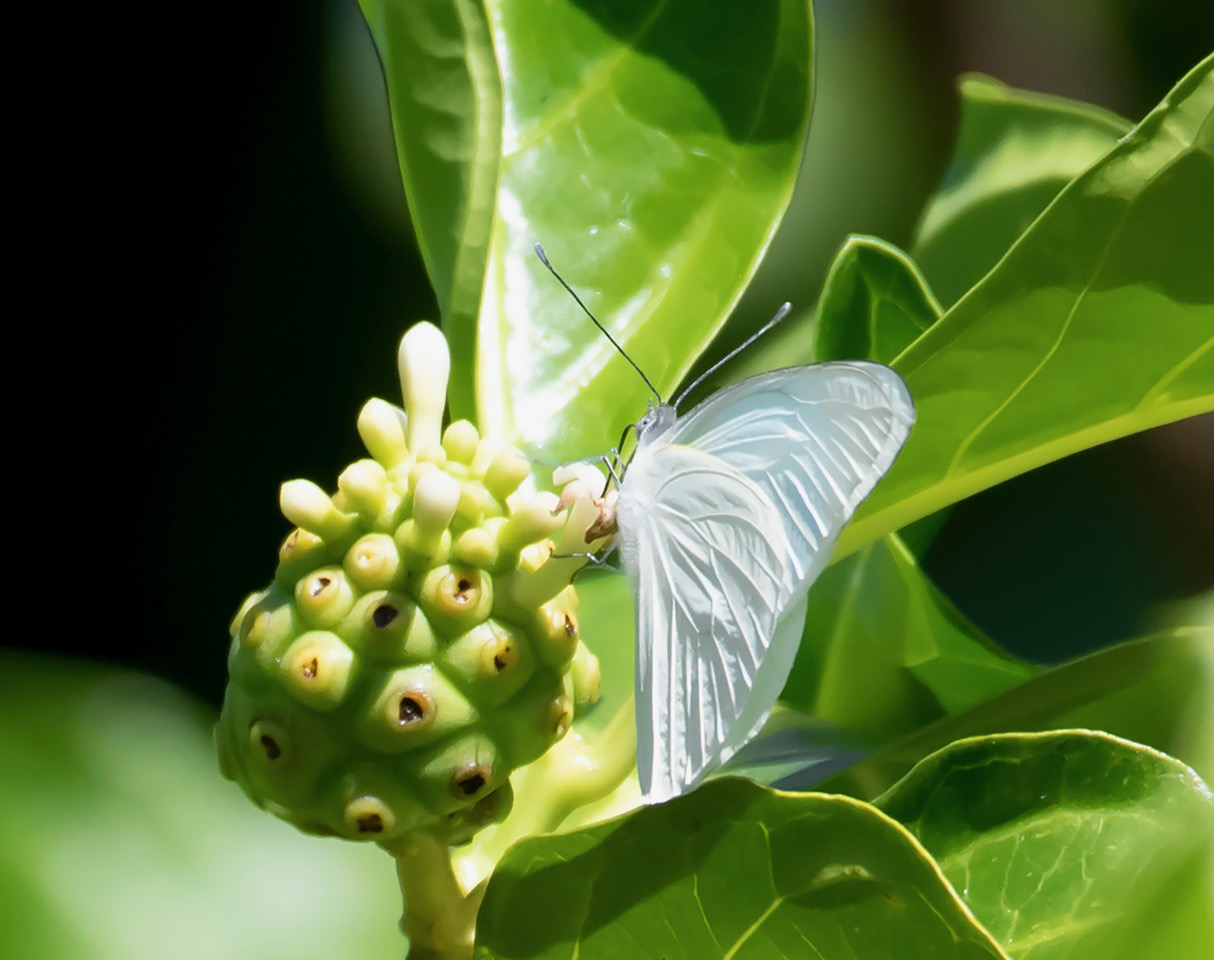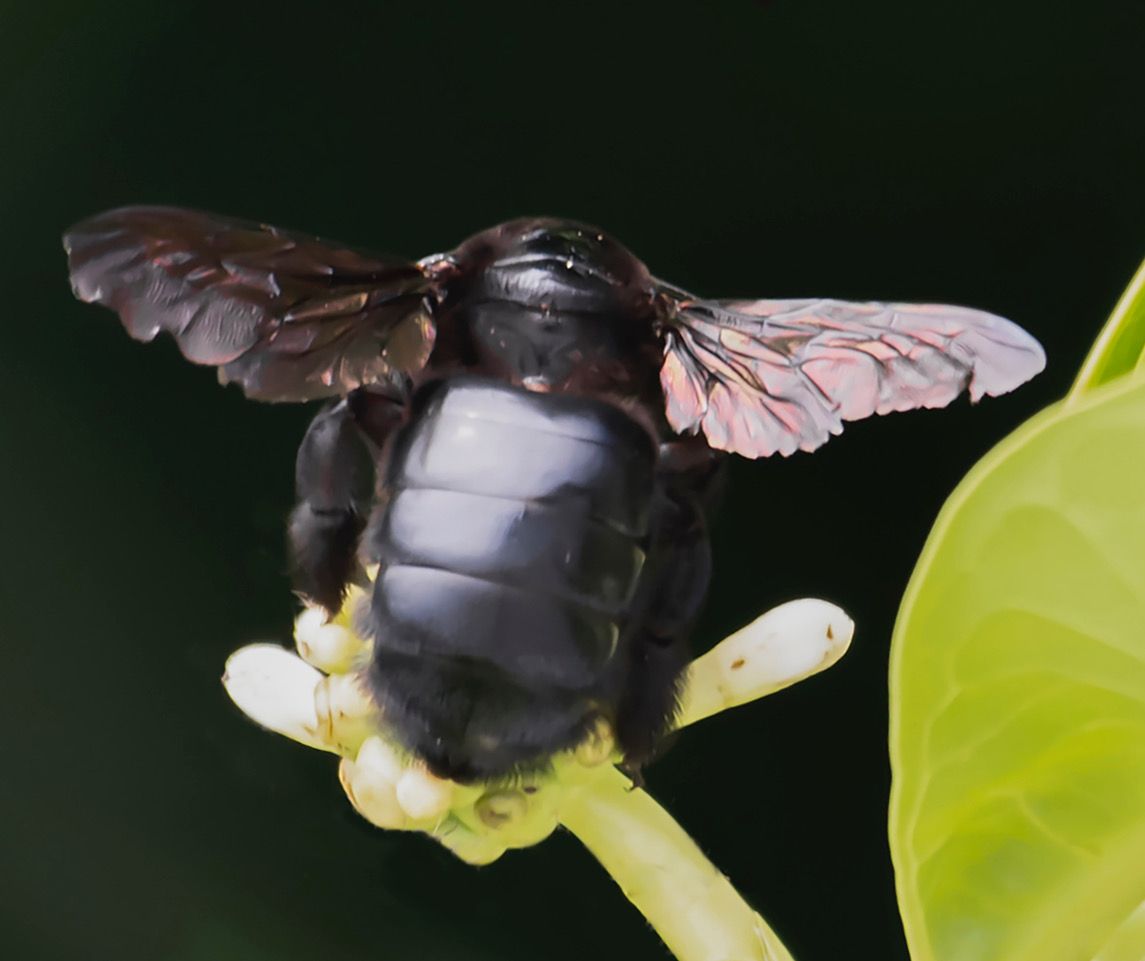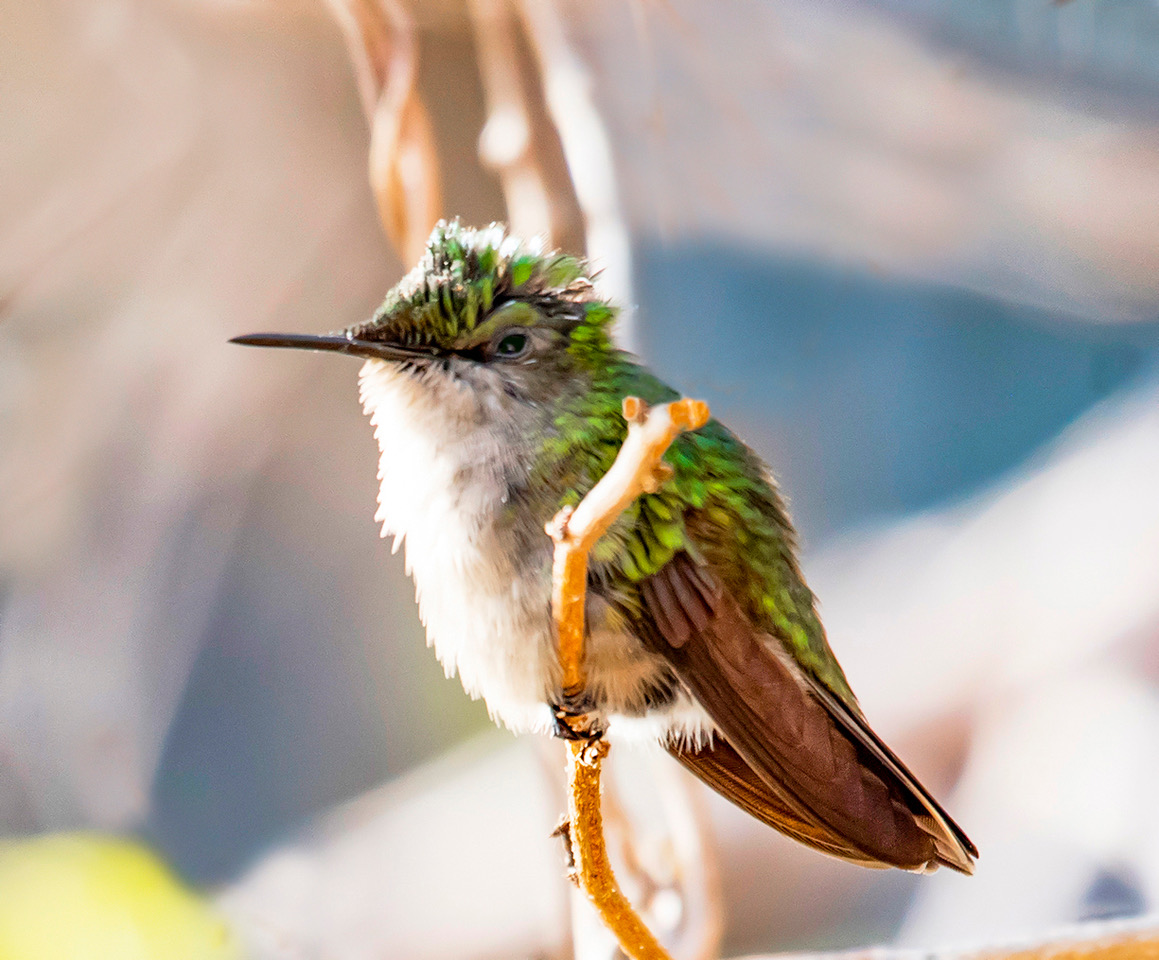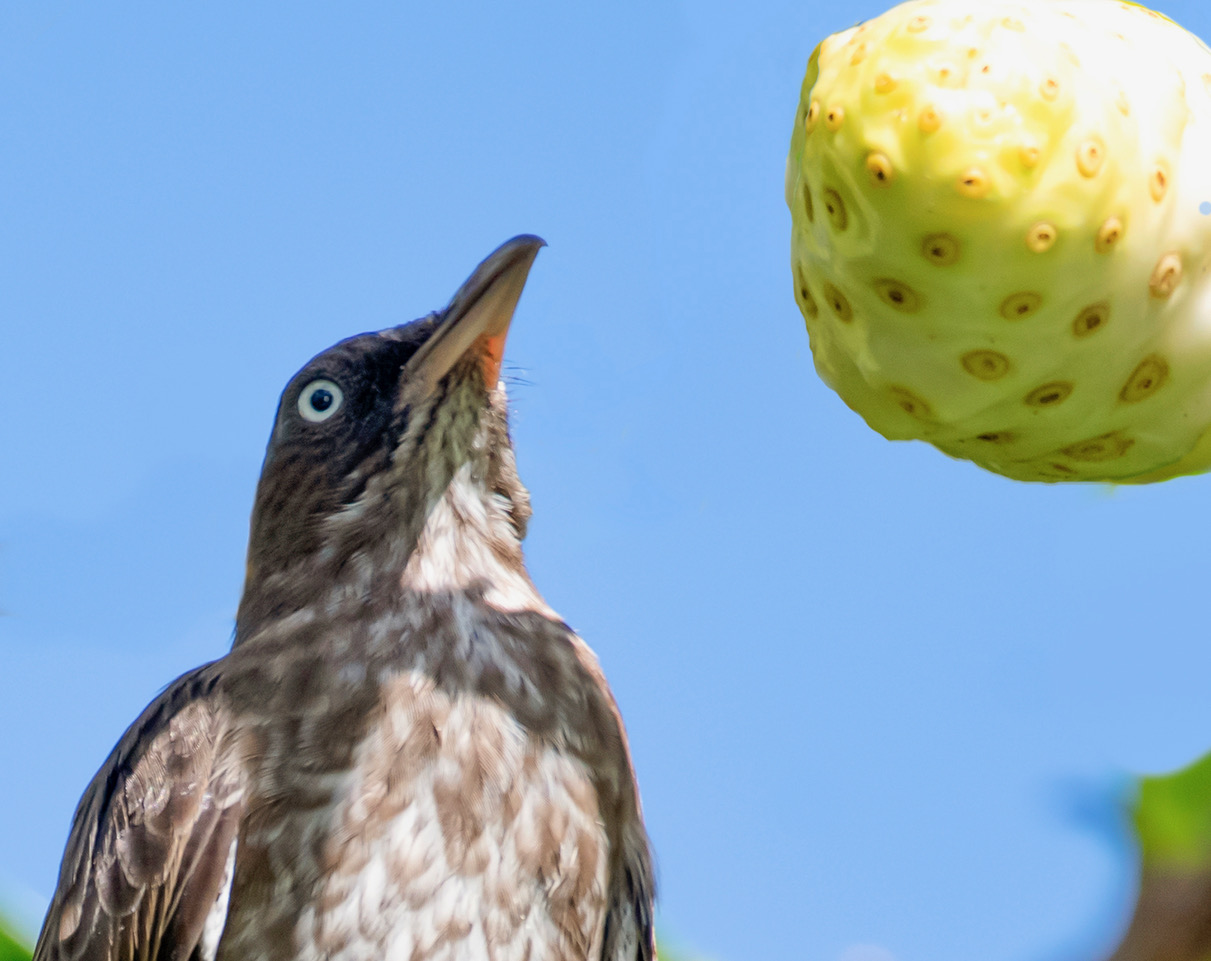
People have been remarking that there are very few butterflies this season. Maybe because it was so dry before our recent weekend of rain.
It’s true I hardly saw any butterflies in my yard. However, when I went to the beach, I noticed that there were swarms of them on the flowering Morinda citrifolia trees, which are apparently quite drought tolerant. They are known locally as ‘painkiller trees’ or ‘starvation fruit’ or ‘noni,’ and the fruit has become popular as a health food.
The painkiller name is not related to the potent rum drink, but to the traditional use of the large leaves to wrap and soothe sore muscles. It is native to Asia and has become naturalized in the Virgin Islands, probably because it is so attractive to pollinators.
The first butterfly I noticed was a Flambeau (Dryas iulia) which has bright orange wings with dark lines. There are only a couple of stripes on each wing, so it is easy to distinguish them from local Monarch and Gulf Fritillary butterflies – which also have orange on their wings but more patterning. The butterflies drink nectar and eat pollen, and help the tree make fruit by passing some of the pollen on to the next flower. However, the Flambeaus will mostly lay their eggs on the Passionfruit vine, their host plant, rather than on the painkiller tree.

Great Southern White butterflies (Ascia monuste) also found these flowers. In some years, we have enjoyed huge numbers of these white butterflies, but it seems there wasn’t enough rain this season at the right time for a big hatching. We’ll see if the recent rain makes a difference. These butterflies are important pollinators for many plants, but in the Virgin Islands usually lay their eggs on the Limber Caper trees.

Another smaller species of butterfly, Choranthus vitellius, fluttered around a different painkiller tree. I hadn’t seen that one before and had to look it up. It is a type of ‘skipper’ – called that because it darts around so quickly. It has a small, thick body, more like a moth, and antennas with tiny hooks on them.

And it wasn’t just butterflies that were attracted to the painkiller trees. Some large native carpenter bees (Xylocopa mordax) also came to the small flowers to enjoy some hard-to-find nectar and pollen.

The Polistes crinitus wasps, known locally as Jack Spaniards, came too. Wasps are related to bees and also enjoy the sweet nectar, though they don’t make honey with it. They do provide pollination services, though, as they move from flower to flower.

Hummingbirds like nectar too, and can also serve as pollinators. They are so fast they move like a blur around the tree, so it is hard to actually catch a photo of them on a flower. However, they rest in between nectar-seeking missions, and it is easier to get one in focus when it is sitting on a branch.
While the green fruits of this tree may have nutritional or medicinal virtues, they become soft and pale when they are ripe and have a smell that has been described as ‘vomit-like.’ The name ‘starvation fruit’ suggests that they are only eaten when there is nothing else available, like after a hurricane. The funky smell of the ripe fruit is probably designed to attract fruit bats, which then help disperse the tree’s seeds.

When the soft fruits fall on the ground, they become squishy walking hazards, especially if they are partially hidden in the sand. But some birds are happy to eat the smelly ripe fruits, including the omnivorous Pearly-eyed Thrashers. I also recently saw a sad-looking chicken at Hawksnest beach on St. John tucking into a squishy one on the ground, probably feeling lucky to find that life-saving starvation fruit.
The island certainly looks much greener after the recent soaking rain, so maybe we will soon be treated to an outburst of new flowers and hatching butterflies, and not just on the painkiller trees.
_________________________________________________________________
Gail Karlsson is an environmental lawyer, writer, and photographer. She is the author of The Wild Life in an Island House, plus the guide book Learning About Trees and Plants – A Project of the Unitarian Universalist Fellowship of St. John, and has just published A Birds’ Guide to The Battery and New York Harbor. Follow her on Instagram @gailkarlsson and gvkarlsson.blogspot.com.
Editor’s Note: This story has been corrected to reflect that noni is a fruit enjoyed by Virgin Islanders, and is known by that name locally.





